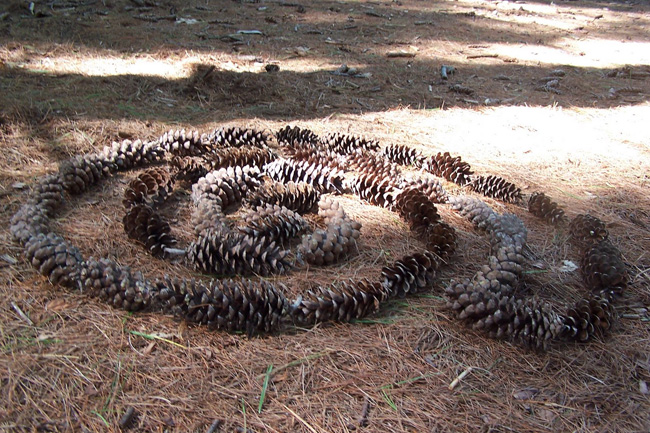Possible Framing Questions:
What can nature teach us about repetition and rhythm?
How do living things grow and change?
Where do we find patterns in nature?
Learning Goal
If students use repetition and rhythm in natural sculptures, then they will deepen their understanding of the principles of artistic design and their natural science learning.
Curriculum Connections
https://www.dcp.edu.gov.on.ca/en/curriculum/elementary-mathematics/grades/g2-math/strands C1. Patterns and Relationships identify, describe, extend, create, and make predictions about a variety of patterns, including those found in real-life contexts http://www.edu.gov.on.ca/eng/curriculum/elementary/arts18b09curr.pdf#page=77 Principles of Design • repetition and rhythm: repetition of colour and shape in patterns; random, alternating, and regular patterns in everyday objects http://www.edu.gov.on.ca/eng/curriculum/elementary/scientec18currb.pdf Understanding Life Systems 1. Investigate similarities and differences in the characteristics of various animals 2. Demonstrate an understanding that animals grow and change and have distinct characteristics.
Possible Sequence of the Day
The framing question becomes the focus of the learning throughout the day. The day starts with an engagement activity or two to determine prior understanding, engage the students, and define and get them interested in the framing question. The rest of the morning is spent doing investigation, exploring and conducting hands-on inquiry in regards to the growth and changes in animals and repetition and rhythm in nature. The afternoon application activity is focused on consolidating and then conducting a hands-on student learning experience (e.g. making a life cycle sculpture out of natural materials).
Pre and Post Activities
